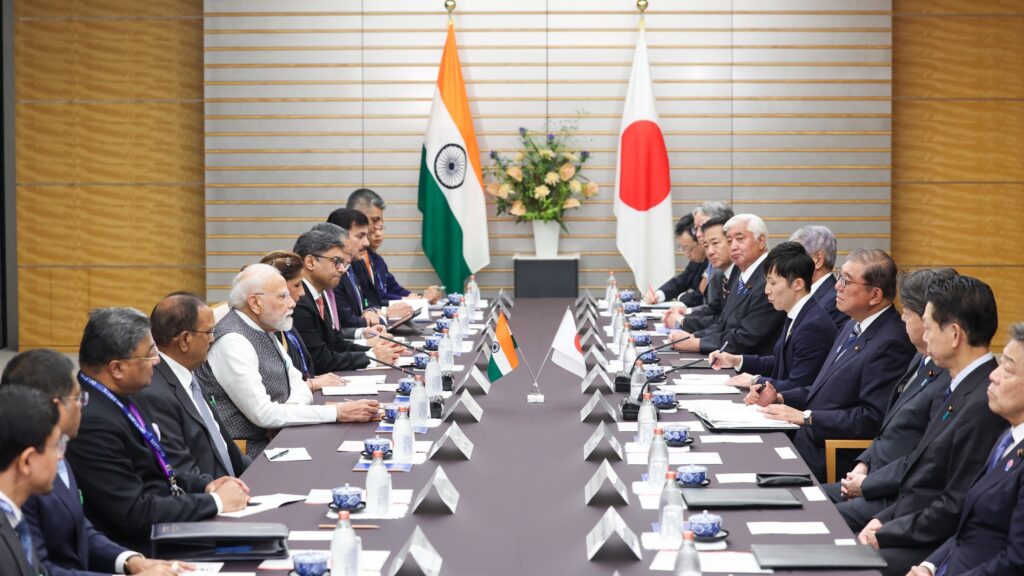India and Japan set an ambitious goal to expand people-to-people ties, including the movement of 50,000 skilled Indians to Japan, under a new action plan announced at the 2025 Annual Summit.

Prime Minister Narendra Modi and Prime Minister Shigeru Ishiba unveiled a landmark Action Plan for Human Resource Exchange during the India-Japan Annual Summit in Tokyo. The plan seeks to promote a two-way exchange of more than 500,000 people in the next five years, including 50,000 skilled Indian professionals moving to Japan.
The initiative aims to build a new wave of cultural, educational, and professional linkages between the two countries. It focuses on addressing Japan’s manpower shortages and India’s goal of boosting skill development and global employment opportunities.
Key Objectives
- Employment & Research: Attract skilled Indians to Japan for work and joint research, especially in semiconductors, AI, and IT.
- Education & Exchanges: Expand Japanese language education in India, student exchange programs, and university collaborations.
- Cultural Understanding: Encourage bi-directional cultural and grassroots exchanges.
- Economic Benefits: Match India’s growing skilled workforce with Japan’s labor market needs.
Main Features of the Action Plan
- High-skilled Personnel – Special recruitment missions, surveys on employment opportunities, and inclusion of Indian English teachers in Japan’s JET programme.
- Students & Researchers – Scholarships, Sakura Science and MIRAI-Setu exchange programs, new LOTUS programme for science researchers, and expanded inter-university cooperation.
- Skilled Workers (SSW/TITP) – Establishing new testing centers across India, offering Japanese language training, and creating an India-Japan corridor on the National Career Service portal.
- Skill Development – Joint programmes like INPACT and “India-Japan Talent Bridge” to train and place Indian workers in Japan.
- Language Development – Scaling up Japanese language training in India, expanding test centers, and launching the NIHONGO Partners programme in Indian schools.
- Awareness & Support – Job fairs, seminars, orientation workshops, and creation of a dedicated website to promote safe and legal mobility.
- Implementation – Annual reviews by the Ministries of External Affairs (India) and Foreign Affairs (Japan) to ensure smooth execution.
The plan also promotes state-prefecture level partnerships, with Indian states matching their skill initiatives to recruitment drives in Japanese prefectures.
Officials said the action plan will not only bridge perception gaps but also create a “Japan-ready workforce” that benefits both nations’ economies.
Source – PMO
